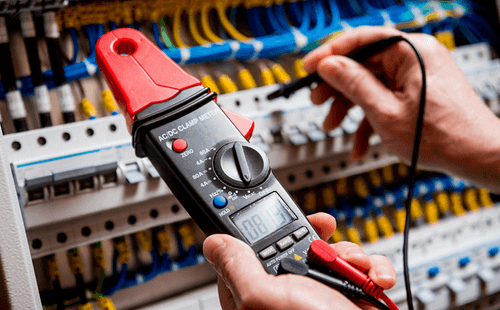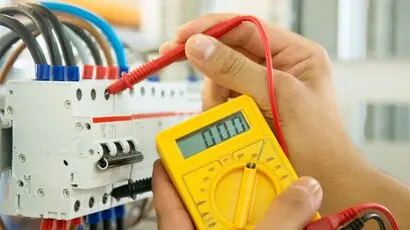Common Electric Issues Every Home Owner Should Know About
Home owners commonly experience various electric issues that can influence safety and security and performance. Issues like flickering lights and stumbled breaker are extra common than numerous recognize. These situations can show deeper electrical concerns that warrant attention. Recognizing the dangers and indications related to obsolete electrical wiring and dead outlets is important. What procedures can be taken to protect against these troubles? Exploring these typical electrical concerns might expose essential understandings for keeping a safe home environment.

Flickering Lights: Causes and Solutions
Why do some homeowners experience flickering lights? Flickering lights can be a typical nuisance, usually indicating underlying electric concerns. One key reason is damaged or loose links within lights or wiring, which can cause recurring power supply. Additionally, using high-wattage devices on the same circuit might create voltage variations, causing flickering or lowering. One more possible problem is an overloaded circuit, where also several gadgets attract power concurrently, straining the electric system. Moreover, outdated or abject wiring can add to irregular electrical flow. In many cases, flickering lights might signal an issue with the home's electrical panel or service line. House owners need to deal with flickering lights without delay to prevent possible dangers. Solutions might consist of tightening up connections, redistributing appliance lots, or getting in touch with a certified electrical expert for a comprehensive analysis. Determining the origin can assist guarantee a secure and secure electrical system in the home.
Tripped Circuit Breakers: What You Required to Know
Have home owners ever before wondered what creates their circuit breakers to trip suddenly? This usual concern usually occurs from an overload of electric circuits, where way too many gadgets attract power concurrently. In such situations, the circuit breaker works as a safety system, disrupting the flow of power to protect against overheating and potential risks. An additional frequent reason is a short circuit, which occurs when a live wire get in touches with a neutral cord, developing a surge of electricity that journeys the breaker. Ground faults can also cause tripped breakers; these occur when an online cord touches the ground or a based surface, positioning serious safety dangers. Property owners must on a regular basis analyze their usage of high-wattage devices to stay clear of overloading circuits. Furthermore, recognizing the function of circuit breakers can help them react appropriately throughout a journey, ensuring their home continues to be well-maintained and safe.
Out-of-date Electrical Wiring: Risks and indicators
Obsolete circuitry can present substantial dangers to property owners, frequently going undetected until problems develop. Homes developed before the 1980s might still have aluminum wiring or knob-and-tube systems, which are no longer thought about secure. Signs of outdated wiring include flickering lights, often tripped breaker, or melting scents near electrical outlets. These indicators might recommend that the electric system is loaded down or deteriorating.Additionally, house owners may observe swelter marks around electrical outlets or buttons, which can suggest getting too hot. The threat of electric fires considerably boosts with out-of-date electrical wiring, as these systems were not developed to manage contemporary electric loads. Property owners are urged to have their wiring examined routinely, particularly when refurbishing or adding brand-new appliances. By acknowledging these signs early, they can stay clear of hazardous circumstances and keep a much safer living atmosphere. Updating to current electrical criteria is a proactive action in keeping home security and efficiency.
Regularly Blown Fuses: Troubleshooting Tips
Frequent blown fuses can suggest underlying electrical problems that might originate from obsolete wiring or overloaded circuits. Home owners experiencing this issue ought to first identify the appliances attached to the impacted circuit. It is suggested to prevent utilizing numerous high-wattage devices all at once, as this can lead to circuit overload. If the issue continues, inspecting the fuse box for signs of wear or damage is important; a malfunctioning circuit box may call for replacement.Additionally, inspecting for loosened connections within the circuit can assist stop future occurrences. Property owners ought to likewise confirm that the fuses being utilized are of the appropriate amperage, as utilizing an incorrect fuse can intensify the issue. Seeking advice from a qualified electrical expert is suggested to review the electrical system additionally if these repairing tips do not fix the problem. Resolving these worries promptly can aid reduce risks and guarantee the safety and security of the home's electrical infrastructure.
Dead Outlets: Common Causes and Repairs
When a property owner comes across a dead electrical outlet, it can frequently provide disappointment and confusion. Several usual causes may lead to this problem. One regular culprit is a stumbled circuit breaker, which can be quickly reset. If any kind of breakers are in the off position, homeowners need to inspect their electric panel to inspect. Another opportunity is a malfunctioning electrical outlet itself, which might require substitute. Furthermore, loose wiring links within the outlet can interfere with power flow, making examination essential.Sometimes, the problem might originate from an overloaded circuit, especially when several tools are linked. In such situations, redistributing the electrical tons can fix the concern. Homeowners must likewise consider the age of their circuitry; older systems might call for updates to satisfy contemporary electrical demands. If these actions do not rectify the situation, consulting a certified electrical contractor is suggested to guarantee safety and proper diagnosis.
Electric Shocks: When to Be Worried
Exactly how can home owners identify whether an electric shock warrants concern? Homeowners must initially assess the severity and context of the shock. A moderate fixed shock, usually felt when touching metal items, is usually safe and usual. If the shock happens while interacting with a plugged-in recommended you read home appliance or electrical outlet, it may show a much more significant issue.The area and frequency of the shocks are vital. Repeated shocks from the same resource, specifically in damp areas like restrooms or cooking areas, could signal malfunctioning circuitry or poor grounding. Property owners should likewise consider the feeling of the shock; a jolt that causes discomfort or contraction is more disconcerting than a simple tingle.If there's any kind of uncertainty, it is recommended to consult a certified electrical contractor. Overlooking prospective electrical risks can lead to significant safety and security risks, including fire or serious injury.
Overloaded Circuits: Avoidance and Precaution
Overloaded circuits pose significant threats in property settings, frequently leading to electric fires or tools damage (Level 2 Electrician). Property owners should acknowledge the indications of an overloaded circuit, such as regularly stumbled breakers or lowering lights. Applying preventative security methods can assist alleviate these hazards and assure a more secure living setting
Acknowledging Overloaded Circuits
What indications suggest that a circuit may be overwhelmed? Home owners need to be vigilant for numerous key signs. Frequently stumbled breaker or blown integrates suggest extreme lots on the circuit. Lowering or flickering lights, specifically when other devices remain in usage, can signify an inadequate power supply. Additionally, electrical outlets or buttons that really feel cozy to the touch may show getting too hot, a prospective fire danger. Unusual humming noises from electrical outlets additionally require focus, as they can signify electric issues. If devices run inefficiently or fail to begin, it might be an indication of an overloaded circuit. Identifying these signs early can assist protect against major electric issues and advertise a safer home setting.
Preventive Safety Practices
To maintain a reliable and secure electrical system, home owners have to execute preventative security methods that address prospective circuit overloads. One efficient procedure is to avoid linking way too many tools to a single electrical outlet, as this can exceed the circuit's capacity. Using power strips with integrated circuit breakers can assist distribute power safely. House owners need to also consistently examine cords and devices for damages and replace any kind of damaged tools promptly. It is important to ensure that breaker are working appropriately and to be mindful of the complete electrical power being used in each circuit. Additionally, speaking with an accredited electrical expert for periodic inspections can recognize possible problems before they rise, ensuring a safer living environment and lengthening the life expectancy of electrical systems.
Frequently Asked Inquiries
Exactly how Usually Should I Have My Electrical System Inspected?
Routine examinations of electric systems are suggested every three to five years. Property owners need to take into consideration much more constant checks if they experience concerns, carry out improvements, or live in older buildings to guarantee security and compliance.
Can I Repair Electric Troubles Myself or Work With a Professional?

What Are the Indicators of an Electrical Fire Danger?
Indications of an electrical fire threat consist of regularly tripped circuit breakers, flickering lights, shedding odors, blemished electrical outlets, or cozy, humming cables. Home owners should continue to be vigilant and seek professional help if any one of these indicators are existing.
How Do I Know if My Home Requirements an Electric Upgrade?
To figure out if a home needs an electric upgrade, indicators consist of regular breaker trips, obsolete circuitry, not enough outlets, flickering lights, and the presence of older electrical panels, indicating possible safety risks and inefficiency.
Exist Details Safety Tips for DIY Electrical Job?
When thinking about do it yourself electrical work, one must always switch off power, use insulated devices, verify circuit capability, follow local codes, and speak with professionals for complicated tasks to guarantee security and stop accidents. One more potential issue is an overloaded circuit, where also several tools attract power concurrently, stressing the electrical system. The risk of electrical fires significantly enhances with obsolete circuitry, as these systems were not try this web-site made to manage modern-day electrical tons. Frequent blown merges can indicate underlying electrical concerns that may stem from outdated electrical wiring or overloaded circuits. To maintain a safe and effective electrical system, home owners have to implement preventive safety methods that resolve prospective circuit overloads. Sydney Level 2 Electrician. Signs of an electrical fire risk include frequently stumbled circuit breakers, flickering lights, shedding odors, blemished electrical outlets, or cozy, humming wires